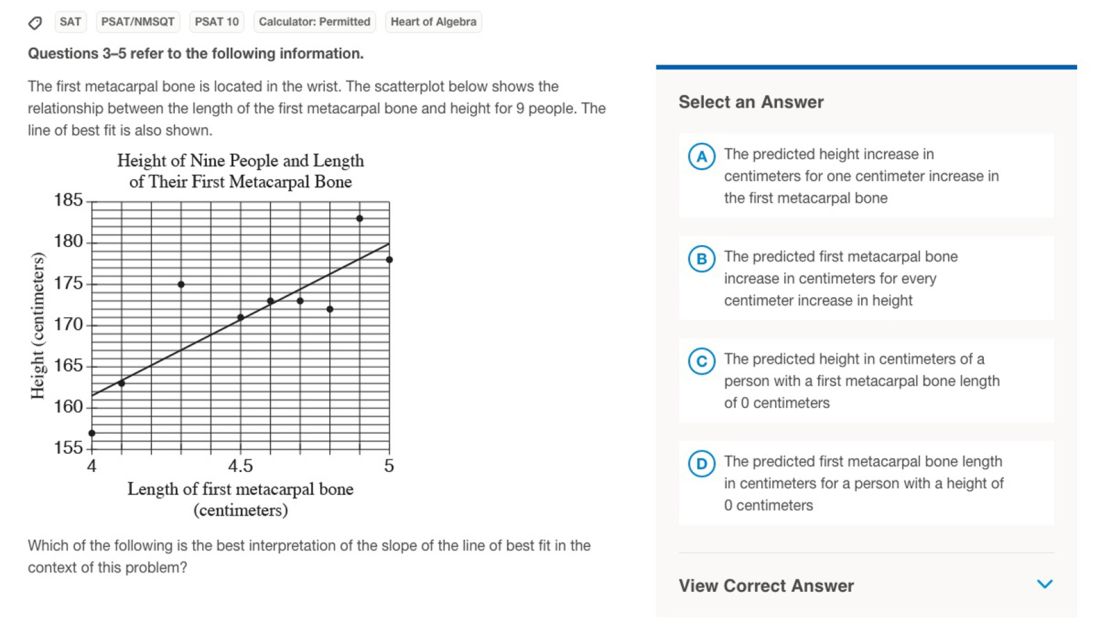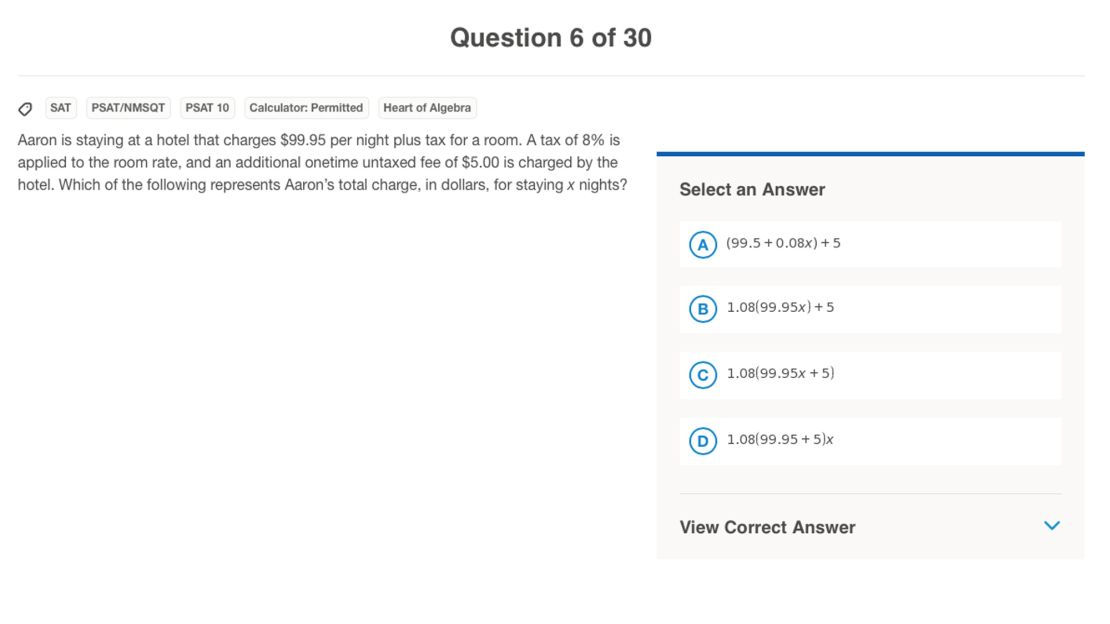Editor’s Note: Kelly Wallace is CNN’s digital correspondent and editor-at-large covering family, career and life. Read her other columns and follow her reports at CNN Parents and on Twitter @kellywallacetv.
Story highlights
The new SAT, which has undergone the biggest changes in a decade, rolls out in March
Some testing experts worry the new exam could put certain students at a disadvantage
My list of reasons that I’m glad I’m not back in high school just got a bit longer: I can add not having to take the new SAT.
If you haven’t heard, the SAT, a test that drives fear into the hearts of many high school students across the country, is getting more than a facelift. It’s undergoing the biggest changes in 10 years, perhaps the most dramatic overhaul ever of one of the main exams used by colleges and universities in determining student admission.
“I would say that these are the biggest changes ever to the SAT,” said Lee Weiss, vice president of college admissions programs at Kaplan Test Prep, one of the largest testing preparation services in the country. “People talked a lot about the SAT changes in 2005. Those were really small compared to what we’re seeing now.”
Gone is the vocabulary section, where you had the feeling you encountered words on the SAT that you would never see again in your lifetime. The essay is now optional. Calculators will no longer be allowed during some portions of the math section, and the number of answers to choose from in each question has been cut from five to four.
Students will no longer be penalized for guessing, with their rough score equal to the number of answers they get right, and overall scoring reverts from the 2400 scoring scale back to the old 1600 scoring scale.

But the biggest change, according to testing professionals and educators, is that the new exam, which will be administered for the first time March 5, is more of a “text-based test” than the previous version, with more dense text in both the reading and math sections.
Some worry that could end up hurting students who have not been exposed to a great deal of reading in their lives.
“The most vulnerable students – namely those who live in low-income areas or don’t speak English as a first language – are likely to suffer the most at the hands of the new SAT,” wrote James Murphy, a tutoring manager for the Princeton Review, another of the nation’s testing prep programs, in a piece for The Atlantic.
‘The myths out there aren’t true’
But the College Board, which created the SAT, says the number of words in the reading section is roughly the same, the length of reading passages is actually shorter on the new exam, and the math section includes the same percentage of word problems as in the past.
“The bottom line is in redesigning the SAT, we carefully considered not only the number of questions that are word problems in the math, but the number of words in each problem and the complexity of the text,” said Cyndie Schmeiser, the chief of assessment at the College Board. “So I think when kids take the test, they’ll realize that some of the myths out there are not true.” (Students can check out some sample reading, writing and math questions on the College Board’s website.)

Schmeiser also said the College Board has done extensive testing of the new exam to make sure that no differential advantage is given to any racial or income group. “We’ve had a number of ways that we’ve already tested these items, and we know that they’re technically sound. And I think students will be pleasantly surprised when they take the test and see how it’s a better reflection of what they’re learning in class than ever before,” she added.
That’s really a key motivation behind the changes – moving the SAT to an exam that more closely reflects what students are learning in high school and will learn when they get to college, as opposed to concepts they might only see when they take the SAT.
Another driver of the changes is the lack of progress in the college readiness rate of high school seniors.
“Frankly, that statistic has been horrifyingly low and hasn’t moved,” said Schmeiser, noting that only 42% of the 1.7 million high school students who took the SAT in 2015 were determined to be “college ready” and not likely to need any remedial attention in English Language Arts or math when they got to college.
“We have absolutely made no progress in helping more and more kids become college ready in the last 10 years, and we simply have to do something about it,” she said.
‘More than simply … a test score’
The redesign was based on the research about what matters most for college readiness when it comes to literacy and math, according to the College Board. The new exam will also include more detailed assessments for students, parents and teachers than ever before, with an online report following the exam of students’ strengths and weaknesses, and how they can improve their skills moving forward.
“The SAT is designed to do more than simply report a test score,” said Schmeiser.
Finding out the reasons behind the changes – and what the changes are – hasn’t quite put an end to anxiety and confusion among students and families, said Weiss of Kaplan Test Prep, which saw a 50% increase in its business for students preparing to take the other college entrance exam, the ACT, in February ahead of the new SAT in March.
“We’ve been hearing from a lot of guidance counselors and families that even in traditional SAT states, more folks are taking the ACT this year just because it’s a known entity and the test hasn’t changed,” he said.
As anyone who has taken the SAT or the ACT knows, preparation is key, especially when you are gearing up to take a brand new exam. Getting familiar with the types of questions that will be asked, the test structure, and what the test is designed to measure will dramatically reduce a student’s anxiety and improve his or her performance, testing experts say. Kaplan Test Prep held its first 12-hour live, online free SAT prepathon Sunday for students to review the new SAT test.
“What was so wonderful to see … was students feeling like they were getting a hang of it and using strategies and kind of demystifying some of the more complex aspects of the test,” Weiss said.
Based on that response, you would think that the students who have access to unlimited testing prep services, which can be wildly expensive, will be able to prepare better than any other students. Not any longer, says the College Board, which points to its new partnership with Khan Academy, a nonprofit educational organization, to provide free 24/7 assistance to students and their families as they prepare for the new SAT.
Not only do students have access to practice tests and instructional resources that parents can go through with their kids, but students can also upload their scores after they take the PSAT or SAT to the Khan Academy site. They will then receive a free personalized study plan that will focus on the college readiness skills they need to strengthen, said Schmeiser of the College Board.
“We are very much committed to tear down the inequities of high-priced preparation and make these world-class resources available to all kids, and particularly those kids who can’t afford high-priced test prep,” she said, noting that the College Board also offers students a daily practice app for the new SAT.
While I joked at the start that I’m glad I don’t have to take the new SAT, I certainly feel for the teens who do. But hopefully these words will help: “I wouldn’t get freaked out,” said Weiss of Kaplan Test Prep. “It’s not rocket science. If you put the work in and you prepare, you get comfortable with it, you’re going to do better.”
What do you think of the new SAT? Share your thoughts with Kelly Wallace on Twitter @kellywallacetv or CNN Health on Twitter or Facebook.




